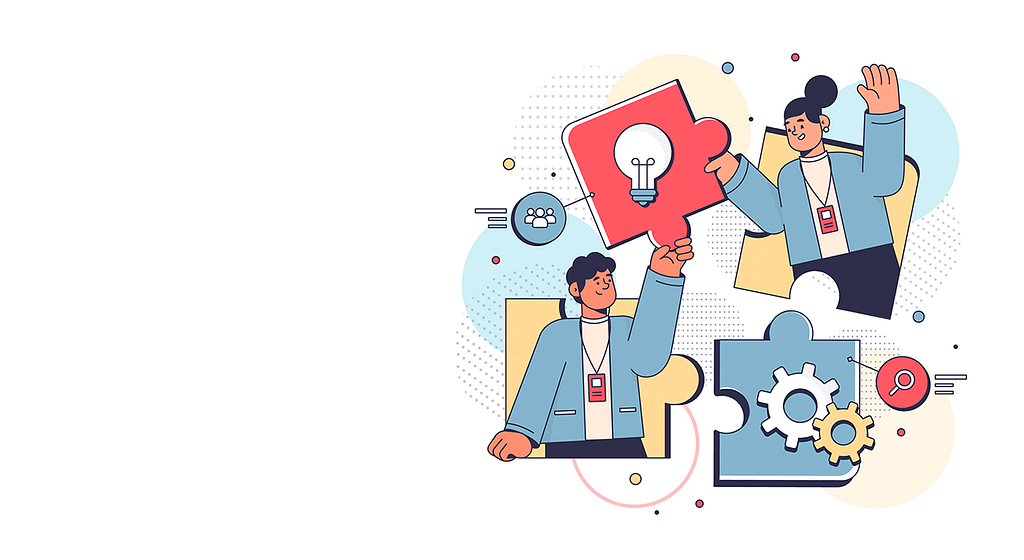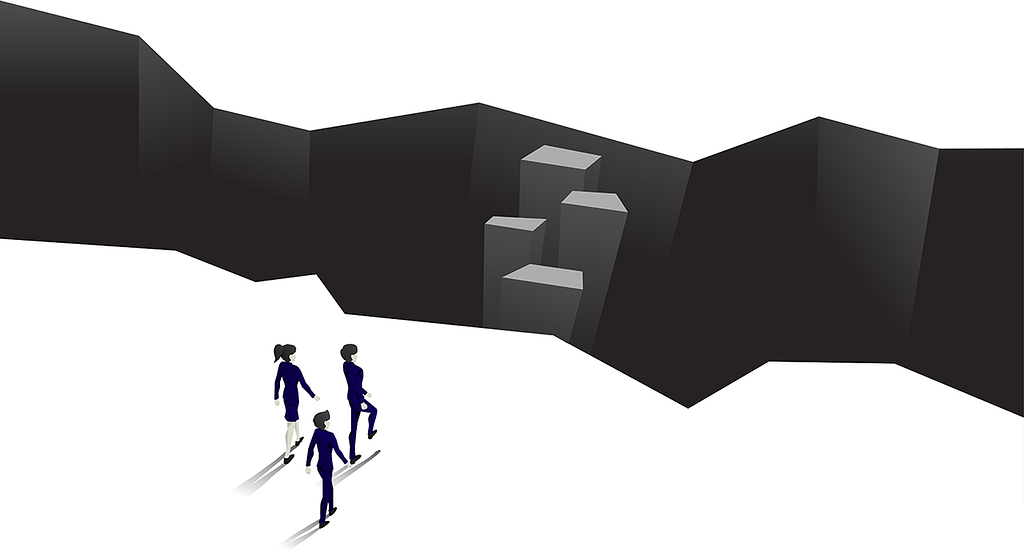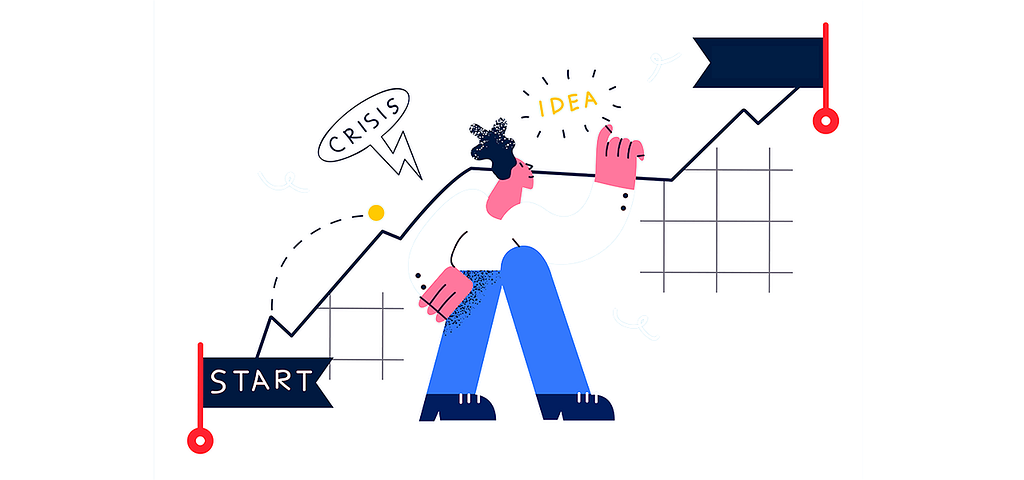Designing a customer way of working means subtle shifts within the organization leading to radical changes in outcomes. It’s not a disruptive exercise. It only requires using key levers to motivate the company to want to change.

The impact can be enormous:
“.. however when you see companies, entities that are actually doing it [changing to a new logic, business model, commercial framework] you see enormous growth and success and enormous release of economic value” — Shoshana Zuboff (1)
An organization is a complex system of levers motivating it in different directions. You won’t need to force a redesign of everything to change the logic and commercial model. The organization will want to grow into a new model if you nudge the right levers setting of a cascade of effects (2).

It all comes down to what fuels the organization. Every organization has fuel, something that propels it (or slows it down) and gives it direction. Fuel is soft measures like mental models, insights, flow of information and incentives.
Let me try to explain:
What fuels the organization?*
- What does it see itself as a producer of — outputs or outcomes?
- Which opportunities can and can’t it see?
- How far is it from the customer to the most influential decision makers?
- How does it measure, value and incentivize teams and individuals?
*I’ve chosen only four, I’m sure there are many.

1. Output or outcome
An output-driven model is a factory floor model. The organization focuses on what it can control (its means of production). The organization has no real view, no language, no understanding of what happens when the offering meets the customer and the user.
If you can’t see it or describe something you won’t have a language to understand it or improve it.
An outcomes-driven model focuses on what happens when the offering has left the factory floor and meets the customer (or user). It has a language to describe the experience and understands that the offering is only one part of it. The other parts are brought by the customer and the system. These are factors the company can’t control but can try to understand and continuously design and optimize for (3).

A factory floor model believes efficiency and effectiveness can come from the production process, but is unaware of the value the product produces for the customer if any at all e.g. Kodak and Blockbuster.
An outcome-driven model — a customer way-of-working — sees efficiency and effectiveness through the lens of what happens when the offering meets the customer and the co-creation of value. Making more of what leads to the most value and stops doing what doesn’t.
“If we can fully understand a customer’s entire experience and work backward from there , we can often discover unexpected opportunities, minimize busywork, and give our customers what they want faster than we could before.” — Matt Lemay, Agile for everybody (4)
Tip:
Ask your colleagues what success looks like to them. Are they describing something that happens before the product leaves the factory floor or after?
2. Which of the possible opportunities can you see?
“We cannot keep all of the details of the world in our brains, so we use models to simplify the complex into understandable and organizable chunks.” — Farnam Street (5)
We do this by using Mental Models.
Mental Models help us automate some insights, but it also hides others. The model(s) we choose frames which world we see, how we see and understand it.

If we see the world from a product perspective it will look very differently than if we look at it from a customer perspective.
E.g. if we take Slack as an example. From a product mindset it’s a team chat service for work and collaboration. From a customer perspective you see a stressed out project manager, a team of designers and engineers needing to co-create a prototype, a business in need of a culture during the pandemic etc.
The lens through which we interpret the world changes how you see what it is, what it needs, what’s important, your role and contribution to it.
Changing the lens or opening the organization up to seeing the world through more lenses enables it to see more opportunities and prioritize differently.
Tip:
Article: An anthropologist walks into bar
Article: Farnam street on mental models
3. How far is it from your customers to your most influential decision makers?
Who in your company interacts with your customers the most or least? How transparent and fast is the flow of information from the customer to the most influential decision makers?
“.. The people whose opinions and actions are the most impactful for the overall direction of the business are often the very people who have the least direct knowledge of customer needs and goals .. there is simply too great a distance between decision makers and the customers whose needs and goals should be driving those decisions” — Matt Lemay, Agile for everybody (4)
An organization should strive to both find a way for everyone to regularly meet with customers. An excel spreadsheet, a persona or customer journey can never compare to the rich meaningful experience of a face-to-face interaction.

At the same time the goal is not to get one person to learn about the customer, but the company learning together and exchanging their learnings in a network of collective insights.
There is a need for transparency across every layer of the organization (sharing is an active exercise and too expensive at scale). To increase the flow of information, making sure everyone is learning at the same time and that everyone is equally close to the customer.
Tip:
- Find a few dedicated people and ask them to draw out a proposal for how everyone in the organization can get to spend as much real time with customers as possible.
- Experiment to build transparency and learning into your daily work. These are not extra activities, but should be integrated into your ways-of-working. (6)
4. How do you measure, value and incentivize teams and colleagues?
“Individuals in an organization will avoid customer-facing work if it is not aligned with their day to day responsibilities and incentives” — Matt Lemay, Agile for everybody (4)
If the organization isn’t measuring value to the customer as measured by the customer — avoiding any dubious proxies — they are more likely asking their employees for customer charity than designing an organization for customer centricity (7).
What gets measured becomes valuable and incentivized. The person deciding the organizations metrics is according to Christensen the most important person in the company (8).

Customer value is not an isolated measurement. It’s one of several metrics in a chain of measurement connecting the company’s strategy to value for the customer unlocking value to the business (9).
Introducing measures helping the company serve the customer will change what gets valued and what gets done in the organization.
Tip:
Using Customer Jobs-to-be-done (10) ask your teams what value is to the customers from the customers’ own perspective. And explore ways to measure that you are able to create this value for them— and how this value reflects back on your business value.
Sources:
(1). Shoshana Zuboff, Design flaws within organizations, https://youtu.be/GCPvnXUVteA
(2). This requires a systems thinking mindset. Read more here: Why every designer should be a systems thinker, https://everythingnewisdangerous.medium.com/why-every-designer-should-be-a-systems-thinker-388e4fb7293b
(3). Design for all the uses we cannot imagine, https://everythingnewisdangerous.medium.com/design-for-all-the-uses-we-cannot-imagine-a7b60d37a1c
(4). Matt Lemay, Agile for everybody, https://www.oreilly.com/library/view/agile-for-everybody/9781492033509/
(5). Mental Models, Farnam Street, https://fs.blog/mental-models/
(6). What’s at the heart of a curious learning organization, https://everythingnewisdangerous.medium.com/whats-at-the-heart-of-a-curious-learning-organization-d7ea1da95bb6
(7). Are you measuring customer value, https://uxdesign.cc/are-you-measuring-customer-value-b1a9e919c473
(8). Clayton Christensen (Innovator’s Dilemma) & Marc Andreessen (a16z) | Startup Grind Global, https://youtu.be/IkBp1ntD3Zc
(9). How do you measure customer experience, https://everythingnewisdangerous.medium.com/how-do-you-measure-customer-experience-14ef428f15d5
(10). Clayton Christensen, Understanding the Job-to-be-done: https://www.youtube.com/watch?v=sfGtw2C95Ms&t=3s
Designing a customer way of working was originally published in UX Collective on Medium, where people are continuing the conversation by highlighting and responding to this story.

Leave a Reply